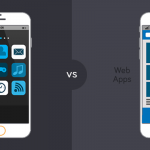3 Says to Improve your Supply Chain
In 2022, supply chain bottlenecks are a huge problem. Not only is it difficult to source the product your business needs due to supply shortages, but prices are going up with an over 8% annual inflation rate. This business environment makes it crucial that you work on crafting your supply chain into the most reliable and efficient system possible. A better supply chain will likely lead to a stronger, more competitive business.
1. Substitute Products
The first and easiest thing you can do to improve your supply chain is to talk to your current suppliers about different product variations that are similar to the current product your source but perhaps more available or less expensive. For example, my business CRAVEBOX sources snack products. If I typically order Chex Mix but lately it has been unreliable and the price has gone up, I might ask the supplier if they have a similar product like Popcorners that I could purchase instead of Chex Mix. Of course this only makes sense if the Popcorners is fulfilled more consistently than the Chex Mix and the price is about the same or lower. It has been in the news a lot lately that car manufacturers are struggling to keep up with demand because there is a global semi-conductor chip shortage. It’s likely in the car companies’ interests to talk to their chip suppliers to see if there are any chip variations that are easier or quicker to make. When the supply chain is being disrupted, as it is now, the businesses that can navigate through it and continue to fulfill consumer demand will gain market share.
2. Find Different Suppliers
Finding new suppliers is a bit more time-consuming than tip #1 but it’s possibly more effective. My company CRAVEBOX sources custom corrugated boxes from one supplier. We’ve been sourcing from this same supplier for several years. However, their prices have gone up over 20% in the past year. I tried to negotiate but they said their raw material costs increased and they need to pass it on to me. So, I contacted a few other local corrugated boxes suppliers and found one that is offering slightly lower prices. I just recently started ordering from this new supplier. When switching to a new supplier, it’s important to not change all at once. You should continue to order from your old supplier because you need time to build a relationship with the new supplier and grow confidence that they won’t suddenly raise prices or become inconsistent in fulfilling orders. You might choose to find new suppliers for price reasons like I did or because your current supplier isn’t fulfilling your orders. It’s a position of strength to have multiple suppliers to negotiate on price and to successfully source the product you need. I have found that a new supplier who doesn’t have your business and is competing for your business and selling themselves to you, will offer lower prices than your current long-term supplier who has perhaps become complacent. It’s important to always explore ordering from new suppliers to keep your current suppliers competitive. You can go back to your current supplier and show them the better prices a new supplier is offering and give them the chance to match or beat those prices.
3. Vertically Integrate
Vertically integrating is bringing more steps of your businesses operations in-house. For example, if you hire a freight company to pickup product from your warehouse and ship it somewhere, you could vertically integrate by buying your own truck, hiring a driver, and shipping the product yourself. This can save a lot of money if there is enough volume. An example of vertically integrating the supply chain is manufacturing your own products instead of sourcing them from another company. For example, Wholefoods grocery store increasingly sells its own 365 private label brand. If you’re looking to buy almonds at a Wholefoods, you will still see a small variety of different well-known brands but a large portion of the options will be 365 brand almonds. The 365 brand will sell raw almonds, lightly salted, salted, roasted, etc. These 365 brand almonds will occupy a large portion of the shelf space devoted to almonds and the shelf space devoted to other outside brands seems to be continuously shrinking. Why is this? Because it is more efficient and therefore profitable for Wholefoods to sell their own private label brand. This is because they hire a co-manufacturing company to manufacture the almonds themselves and there are less middlemen involved. Generally vertically integrating can save you money and make your supply chain more reliable. It’s a great competitive advantage.
About the Author

John Accardi is the founder and CEO of cravebox.com and starcoursecap.com. CRAVEBOX assembles care packages and gift baskets to be sold online. STARCOURSE CAPITAL is a venture capital firm that invests in young e-commerce companies. John dropped out of a PhD program at Georgetown University in 2014 to start CRAVEBOX and he says it’s the best decision he ever made. He now runs the businesses out of North Wales, PA and also lives in Manhattan part-time. When John’s not working, he enjoys sailing, playing guitar, and spending time with family.
Image by Freepik















